Capricious June
Monday, July 4, 2016
The rosy hued vison of June, the start of summer, is of
the longest of warm days and the perfume from masses of
unspoilt roses. If only every year it could be like that, but June
is often an unpredictable and frustrating month. On the whole we
have fared reasonably well here in contrast to the weather
experienced in the south east of England. There was plenty of
colour in the gardens and the roses especially were very early, in
part due to a good finish to May.
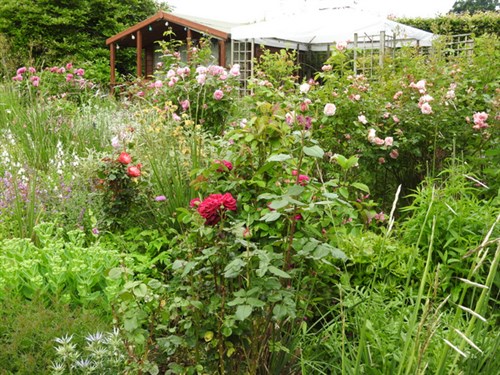
I have felt well and been able to do my usual range of garden
work. A recent review of my condition has concluded that my cancer
appears to be stable at present with full lung capacity and no
symptoms which are causing any undue concern.
Weather
The first 10 days were idyllic with some hot days for June
and consistently high overnight temperatures. The rest of the month
was a real mixed bag with plenty of heavy rain, frequent thunder
and lightning, interspersed by occasional sunny warm days .The rain
was however welcome as we had been watering the nursery and gardens
daily since the last week of May. Vey little wind throughout
the month. There were 16 daytime temperatures over 20C, min
max 25C, and only one night time reading below 10C (min
7c) and a max of 16.3C.
On the evening of the summer solstice we were promised a
"strawberry moon" which only occurs when a full moon coincides with
the solstice. The moon appears as strawberry pink but unfortunately
there was too much cloud here.
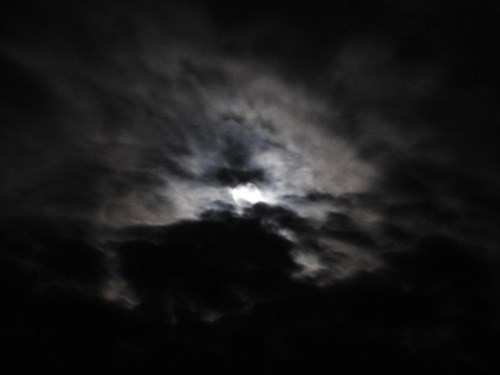
However the following night we had the most
wonderful strawberry sunset - and I didn't have to get up in the
small hours to capture it!
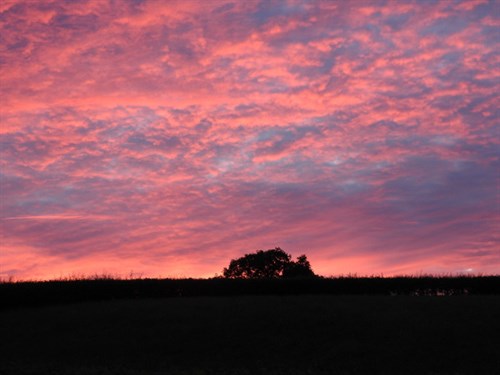
Garden update
We cannot believe how well the garden looks in spite of me being
largely out of action for 3 months until April, and a slow cold
spring.
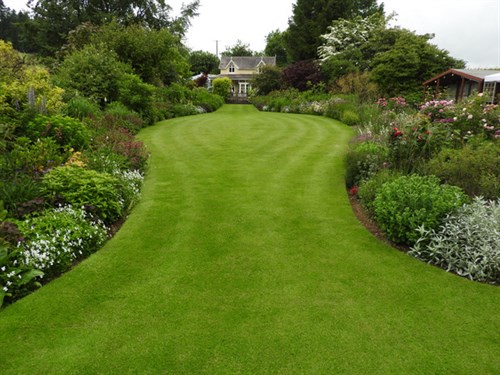
The spring flush lasted longer than usual with some
partcularly fine aquilegias which had no trace of the recently
reported downy mildew that has devastated aquilegias in many
parts of the country. We always dead head them before they set seed
to avoid unwanted seedlings everywhere but take seeds from the best
forms to sow in pots. The stars of June were quickly into their
stride with late bearded iris, oriental poppies and lupins to the
fore. The pond edge plantings continue to look wonderful with
contributions from awide variety of plants including a very early
showing of hemerocallis "Chicago Sunrise" from the second week of
June
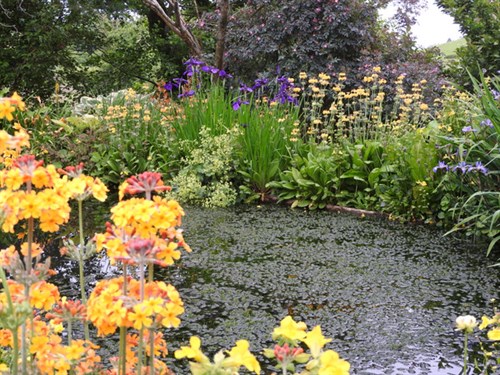
We have again been plagued by Hemerocallis gall midge which
appears to affect June flowering forms more than those which flower
earlier or later. Fat distorted buds are sure sign of infestation
and need to be removed as soon as you discover them as there is no
other means of breaking the cycle of infection from one year
to the next.
A perfect flower of hemerocallis "Minight
Masquerade"
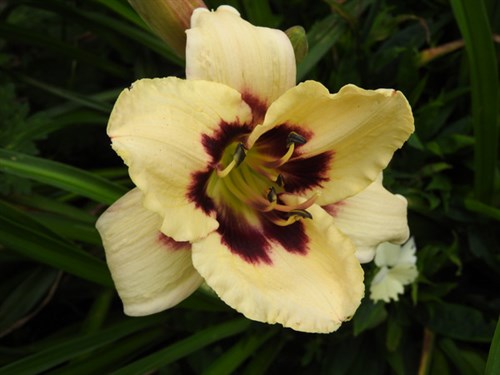
A gall midge affected bud on the same plant
plant
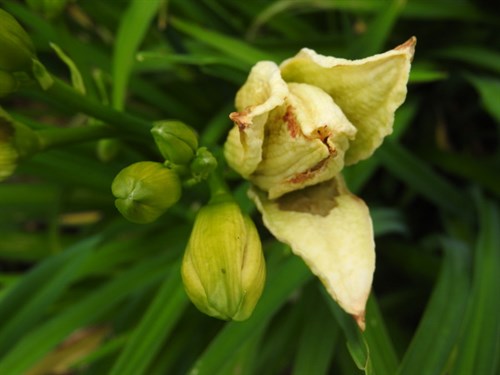
On a brighter note the vegetables, none of which were sown or
planted prior to the end of April, have come on well and we are
already cropping salads, cabbage, calabrese, cauliflowers and
beetroot.
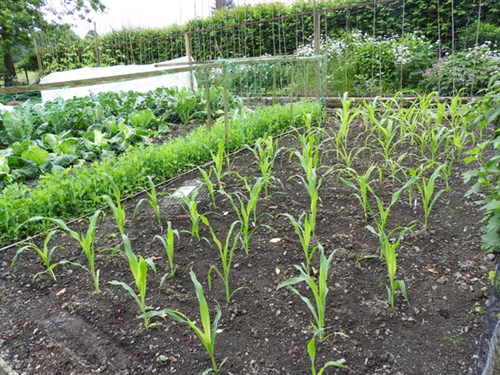
The first crops are always eagerly awaited, more so than
ever for me this year

There are flowers on the potatoes but for the first time
in 40 years we are not growing maincrops, only earlies, second
earlies and salad varieties. A later start is often recommended by
experienced veg growers as the soil has warmed up by then and
with more daylight hours and generally warmer conditions there are
no checks to growth of the plants. This year I decided to grow
under fleece, all types of vegetables apart from potatoes, as it
protects crops from pests notably carrot and cabbage root fly,
gives protection from the extremes of weather.
Fot the first time this year, after having had it recommended to
me by Medwyn Williams who swears by it for his show brassicas, I
have used a soil conditioner called Perlka which encourages
beneficial soil microbes. It has 20% nitrogen and with 50%
lime it raises PH in acid soils like ours and keeps clubroot
at bay. I have to say that I have never had such large brassicas
with huge heads of calabrese and caulifower. Greyhound and Hispi
are 2 early summer cabbage I have grown for many years but I have
never had such consistently large heads on what are normally fairly
small cabbages. The heads on broccoli are larger than cauliflowers!
It comes with a range of cautions for use but so do many gardening
products, it has been in around for 100 years and is licensed for
use in the UK.
Perlka in a tub - black gold.
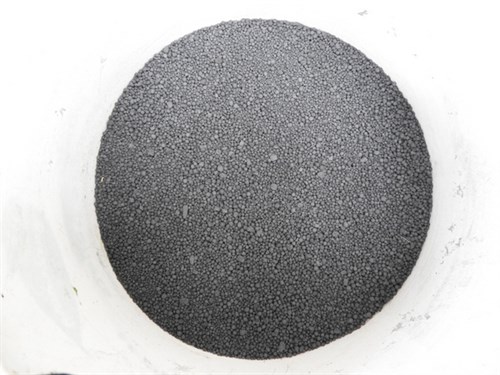
Since coming here I have had a three course veg rotation in
separate beds each about 120 sq metres. This year we made the
decison to reduce them and have put the bed nearest the house to
lawn. This has substantially reduced the workload but we still have
room for most of the 25 plus types of vegetables we usually
grow.
Moira and Robert the "lawns guru" levelling off prior to
seed sowing, assisted by Kit the Kat

As a former golf greenkeeper Robert has all the
necessary equipment including the drag mat shown here which in no
time gives a final levelling and removes the larger
stones
R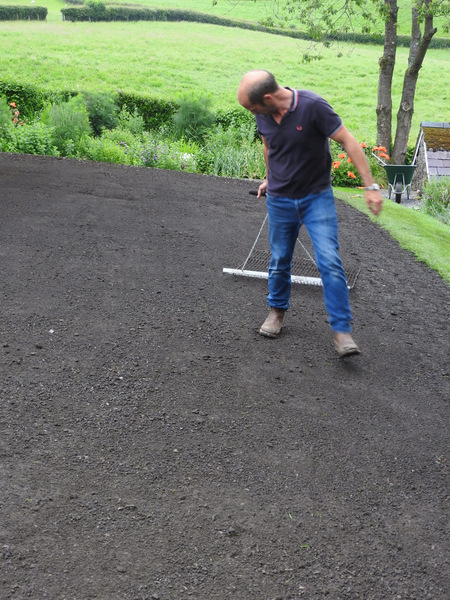
Talking of lawns they have looked especially good after using a
summer fertliliser called "Evergreen" which, in adition to a high
proportion of nitrogen, also has other nutrients and 2% iron which
really greens up the grass. Growth is amazing and regular cutting
is required!
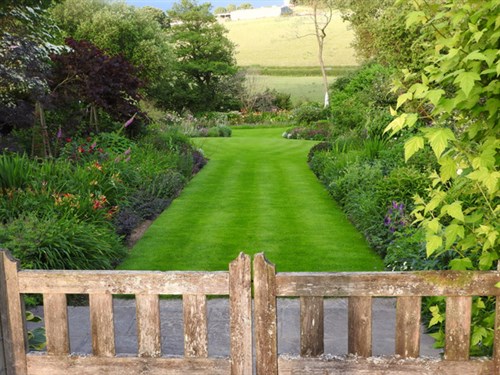
Finally special mention should be made of the Paddock Pond which
after its rigorous clean last month is brilliantly clear and free
from duckweed and blanket weed which can be such a pain as the
weather warms up. This may well be due to a square bale of rushes I
placed at the top of pond where an inlet suplies fresh stream water
to the pond. Not only does it filter out some of the silt, but it
may well contain, as barley straw does, elements which inhibit the
growth of blanket weed in particular.
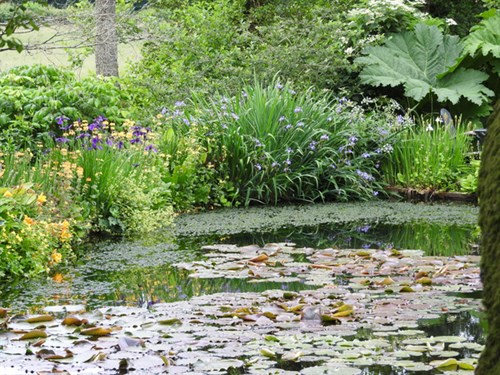
What looks good?
A huge cast of contenders makes it difficult to select the very
best so I will leave it to pictures to tell the story. They
represent a cross section of plants for all situations, many
favourites old and new from the smallest to the largest.
Almost hidden amongst many brightly coloured pelargoniums on a
dedicated bench in a polytunnel is this little gem p. gibbosum. It
is a really straggly old thing with the flowers at the ends of long
wood stems. An unusual colour and a scent - it's good to have
something different in plant collections.
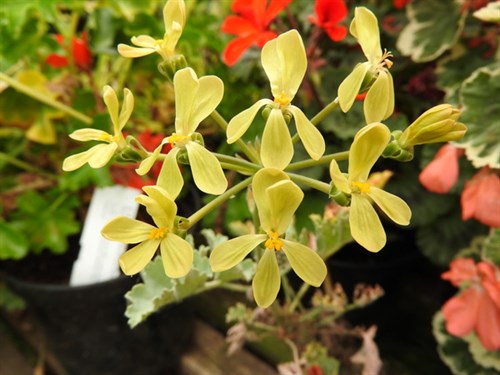
Hostas have been magnificent this year. With over 200 to
admire we are spoilt for choice.They are all over the gardens in
monoculture groups as at the edge of the pond, or as part of
mixed border collection

Of all the plants in the nursery probably the best
seller is a small rockery plant from S. Africa rhodohypoxis.
A range of species and cultivars is available in the UK and the one
shown is one of the largest R milloides "Claret". Provided they are
given very sharp drainage for the tiny bulbs which form sizeable
clumps in time, they are totally hardy for us in our wet, frost
pocket garden.
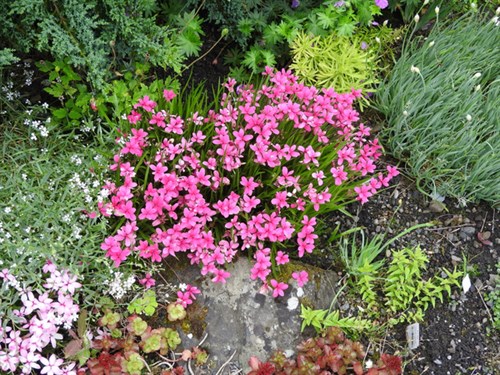
Plants we grow from seed always give the greatest
satisfaction and these martagon lilies f. album took 4 years to get
to flowering size. Settled down now and 7 years old, in part shade
they make a stunning contribution to the June garden
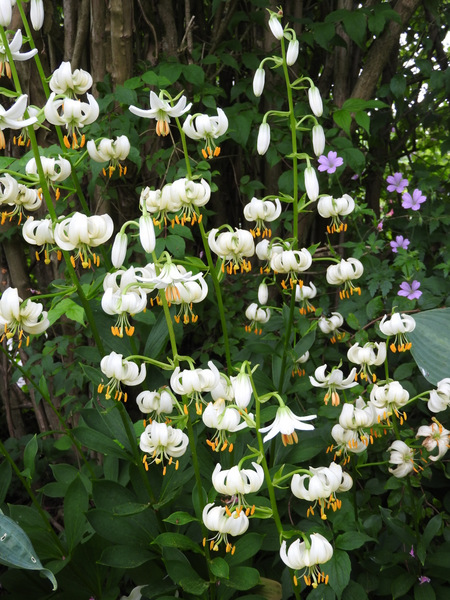
Another seed grown lily cardiocrinum giganteum is
producing second generation bulbs which give slightly shorter
plants but still have that spine tingling scent all over the garden
up to a distance of 20 metres
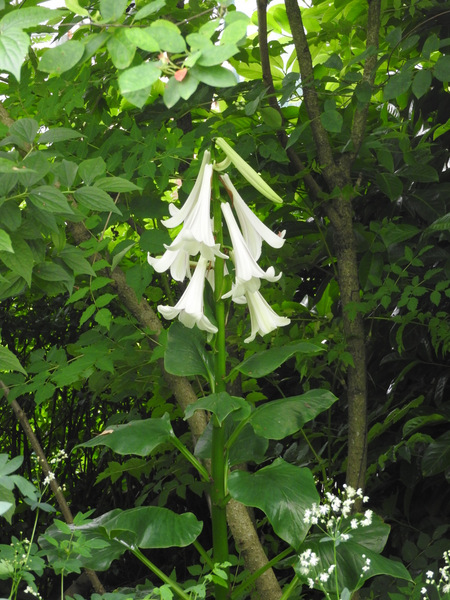
Cercis canadensis "Forest Pansy" and cornus kousa
var. chinensis
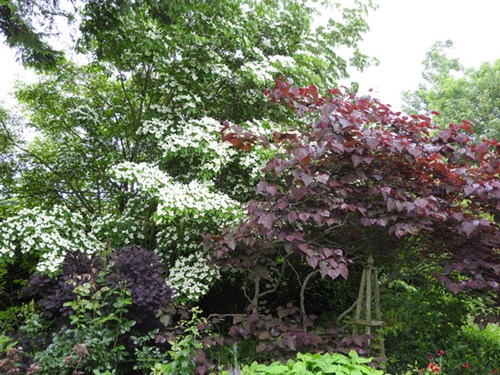
Salvia nemerosa "Caradonna"
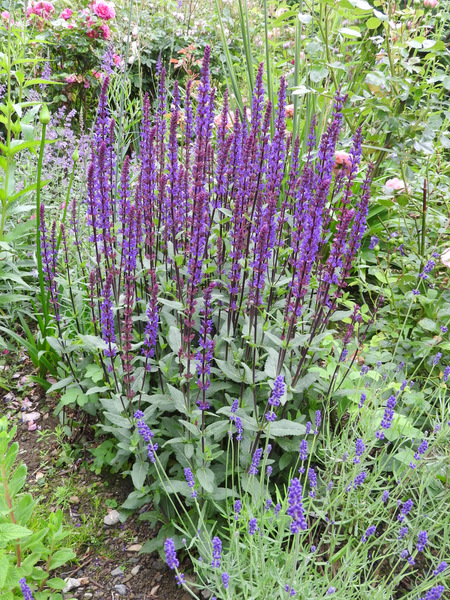
Canpanula alliarifolia: masses of white bells on a
spreading plant to half a metre
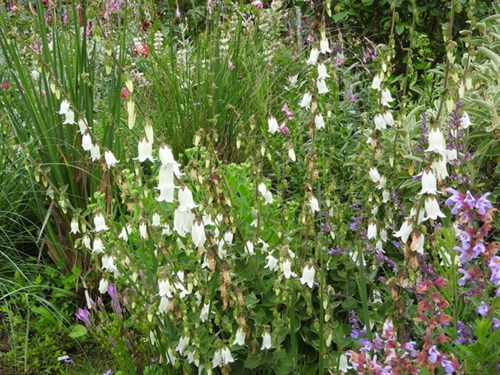
Perfection of flower form in "Munstead Wood" from
David Austin
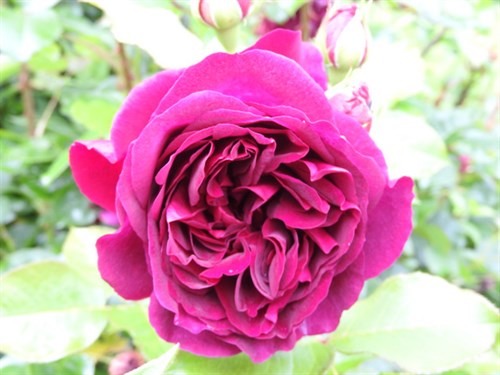
Simplicity and charm with wonderful flowers and foliage
on a 2 metre wide and high plant: rosa glauca. Grown from seed and
now 20 years old.
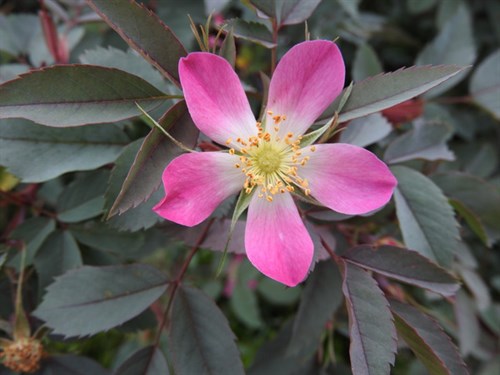
Wildlife and countryside
Two views from the top of the hill behind us, this one to the
North east towards Llandovery
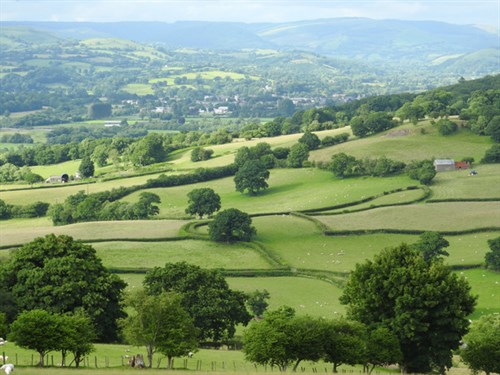
And this one due east to the Brecon
Beacons

Birdlife tops the bill with a range of visitors to the
gardens none more welcome than redstarts, more numerous than they
have been for some years. We were lucky enough to have a pair nest
in a small whole in a soffit board under the eaves of the
verandah.
The hansome male bird with bright
plumage

And the rather dowdy female! It makes a change -
the roles are reversed in our house!!
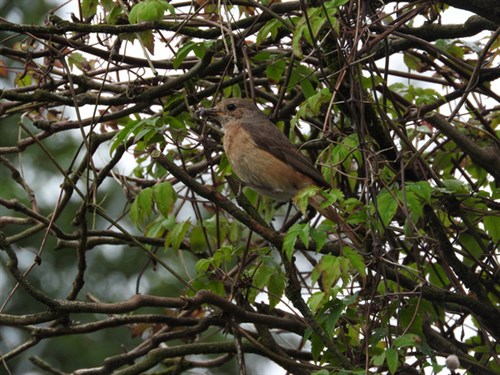
They are such busy birds that kept us entertained all day
long with their comings and goings, for almost 6 weeks. In the
wider surrounding countryside they are everywhere particularly
roadside hedges. Plenty of common garden birds too including grey
wagtails on a visit from the river 60 metres away.
Less welcome birds have been the pesky magpies which again
raised a brood in the large conifers in the Paddock Garden. With
the parents and 4 hungry youngsters on the look out for food,
a lot of the smaller birds have their nests raided or their young
taken soon after they have fledged. Redstarts however are smarter
as their eggs hatch over a period of a few days rather than all at
once, unlike tits for example which often have up to 10 young to
protect from predators. Redstarts usually have only one at a time
to defend which gives them a greater chance of survival.
A heron has been sighted regularly on the Paddock Pond, the
exceptionally clear water this year giving them more chance to take
advantage of the large shoals of rudd.
Finally we a had a recent vist from a collared dove, a gentle
and unassuming bird, but with the most montonous call of hoo hoo
(pause) hoo, which it keeps repeating all day long. Fortunately it
has moved on to pastures new!
On the wildflower front the star plant has to be the foxglove
which is everywhere, especially along roadside verges which it
shares with ox- eye daisies which do well everywhere every year
whatever the weather. Once again the local council seems to have
abandoned cutting back verges on most minor roads, which gives all
plants a chance to complete their life cycle and for us to enjoy
one of the best free flower shows from the comfort of a car
seat.
Sadly few butterflies yet or dragonflies but a few day
flying moths have been seen here.
One of the few sightings was this yellow tiger
moth
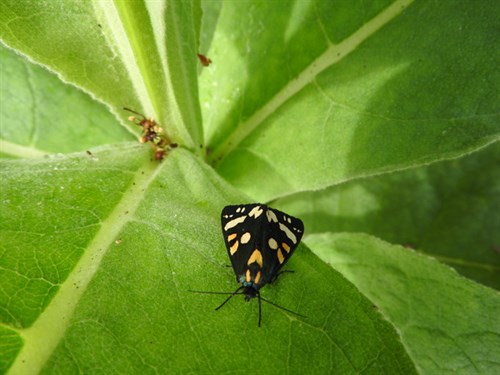
Visits
As we no longer open our gardens at Cilgwyn Lodge, it has
been so good to have the opportunity to visit many excellent NGS
gardens in West Wales and further afield. There is great
camaraderie amongst NGS garden openers and we have made many
friends from doing so who have supported us so well over the last
16 years that it is nice to be able to support them for a
change.
1,000 feet up in the Cambrian Mountains is Bwlchau Duon,
Ffarmers. It is a challenging place to garden especially with
weather like this to contend with. Woodland plants and moisture
lovers do well
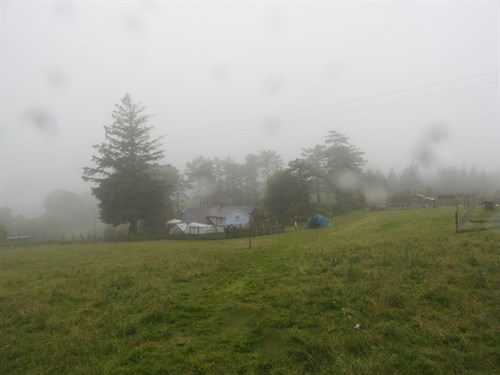
A superb stand of primula florindae enjoying the
moist conditions

There are also lovely ducks, hens and geese to
admire
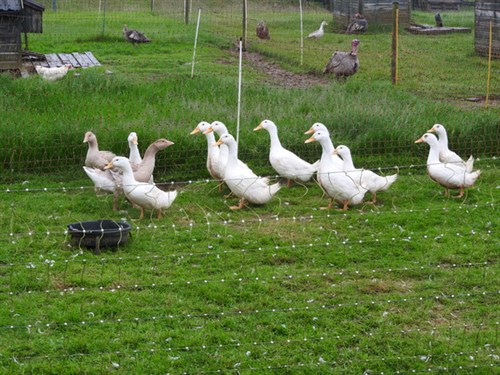
In complete contrast just 4 miles away is The old
Post Office, in a village setting and a sheltered location. The
owners make ceramics and garden statues which are displayed
all over the delightfully laid out garden

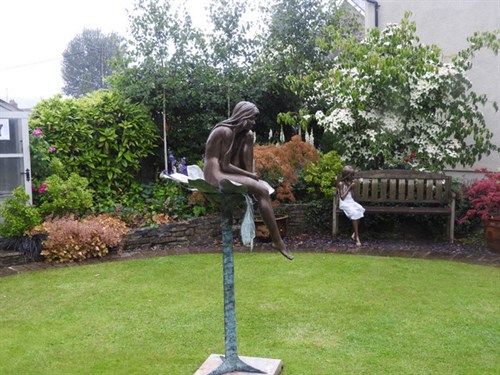
An artists eye in the planting of this large
hosta

The highlight of the month was the first NGS opening of their
gardens at Gelli Mydog by our friends Robert and Barry. It is a
garden we have seen develop over the last 5 years and supplied lots
of advice and plants. It was a thrill on a perfect summer's
day in early June with gardens looking perfect, to be able to
provide plant sales. There were over 180 visitors and takings from
entrance monies, plant sales and teas raised £1,300, a magnificent
achievement for a garden opening for the first time.
Apart from some large specimen plants the gardens have
been developed in only 5 years and there are plans to extend the
gardens further over the next couple of years.

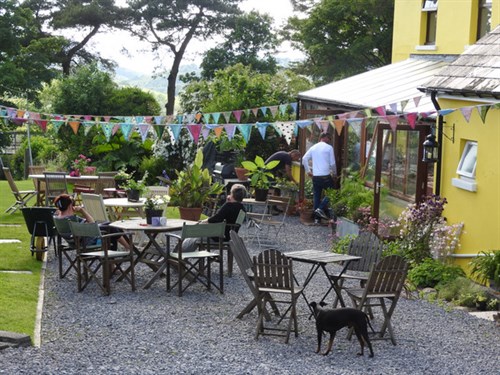
Plant sales and tea tent
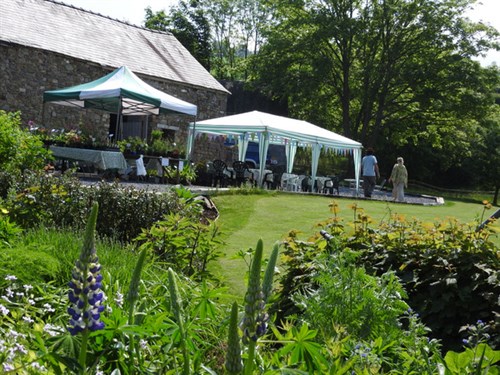
The 40 metre stream bed has only been constructed for
one year but has already taken on an established look with
massed plantings of primulas, iris, ferns, hostas rodgerisas,
astilbes and other moisture lovers
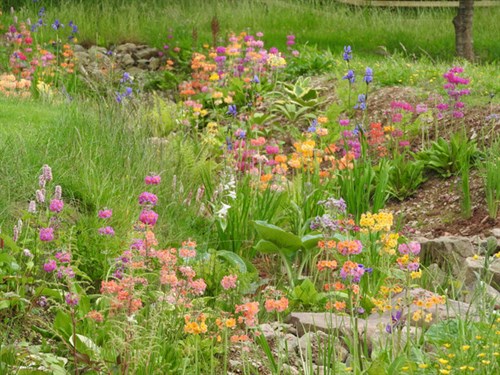
After a long hard day owners Robert and Barry take
a welcome break under a rose and clematis covered
arbour
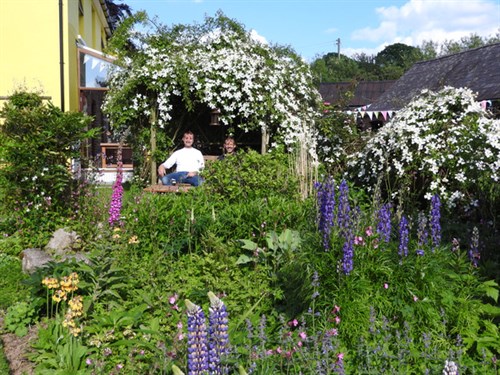
Make a note for your diary. The next NGS open day at
Gelli Mydog is Sunday 24 July 12-5.00 pm. Teas and plants for sale
from Cilgwyn Lodge Nursery. Gardens signposted with yellow
direction signs from Llandovery and Llangadog
It was the weekend of the NGS Garden Festival
which is held every year at the beginning of June and a
special visitor on the day was the Chief Executive of the NGS. A
complete surprise to us was the presentation he made of
a certicate recognising all our efforts and the money we raised for
the charites supported by the NGS since first opening in 2000.We
were deeply touched by this kind and thoughtful gesture.
The presentation to us, George Plumptree of the NGS on
the left and Barry on the right

We had a short break in Devon at the end of June - garden
visting of course! and news of this will appear next
month.
Happy gardening